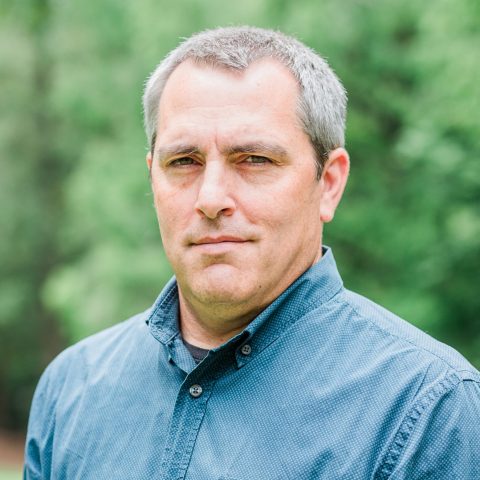Faculty Spotlight: Assistant Professor Robert Sproull

Robert Sproull, who teaches in Auburn’s Environmental Design (ENVD) program, is on his second go-around as a faculty member in the School of Architecture, Planning and Landscape Architecture (APLA). He first taught in APLA from 2010 to 2014 and then left academia to go back into practice. However, an unexpected encounter made him think twice about his decision. “I came back to academia by chance in a way,” he explained. “I ran into a friend from graduate school at a conference. When she found out I had gotten out of teaching she was a little upset with me, in a good way. It helped me reconsider my decision about leaving academia.” When Associate Professor Emeritus Magdalena Garmaz asked him to teach a course in the ENVD program in 2016, he accepted, and soon that one course turned into a full adjunct teaching load. Sproull transitioned to a tenure-track Assistant Professor position in 2022. “It’s a very winding path I took to be here at Auburn in the position I have now, but I am very excited about the students we have and the direction of the program,” he said.
Sproull holds bachelor’s degrees in architecture and civil engineering from Auburn as well as a Master of Architecture from Rice University. Sproull began his education at Auburn as a student in APLA but soon switched to civil engineering, despite feeling like architecture was a better fit. He recalls sitting in an upper-level structures course near the end of his engineering degree and thinking that he was going to spend his entire career taking direction from architects. “I really wanted to be the creative driver of the design, rather than a technical consultant,” he stated. “The irony of that notion of the relationship between the architect and engineer is that now it’s often the opposite. I listen to the engineers I work with faithfully. This doesn’t mean I take their suggestions without question, but my previous degree often helps me to understand their concerns and find solutions that satisfy many issues simultaneously.” He says his engineering background also helps him to be a better teacher, since students learn in very different ways. “Some enjoy understanding the derivation of equations and theories related to engineering topics and crunching through the numbers associated with those. Others love the ambiguity of the design process and the unforeseen outcomes that evolve from it. I was fortunate to be able to learn both ways of thinking.” As an architect, he has collaborated on many large-scale buildings around the world, particularly with the Renzo Piano Building Workshop, with whom he worked on museums and cultural buildings in Atlanta, New York and Boston.
Sproull has taught many different courses in APLA over the years, but his current favorite is ENVD 3100, Research and Civic Engagement. In this course, Sproull asks his students to find connections between communities with rich histories and the cities they are part of. He also tries to team up with a community partner to expose his students to influential people who help to create the built environment. For the last two years, students in this class have worked with members of Mount Zion A.M.E. Zion Church in Montgomery, Alabama, to investigate the possibilities related to the built environment around their neighborhood. “Their original church is being converted into a museum space related to their neighborhood, once known as the Peacock Tract,” Sproull explained. “I ask the students to fold their own design interests into their work. We discuss issues of technology, economics, social conditions and sustainability, among others, and let the projects evolve from these topics. Often the students will pair up with one other or overlay their ideas with a classmate’s projects to conceive of a more substantial solution to the problems they find.” He says the students’ solutions range in scale from mobile apps for phones to large-scale city plans.
In addition to including civic engagement in his teaching, Sproull maintains that focus in his research. He is currently working with Rebecca Retzlaff and Keith Hebert, faculty members in the College of Liberal Arts, to develop an online virtual platform that will help students understand the history of city planning in Montgomery. They will show how policies related to racial discrimination shaped the built environment over the years. They were recently awarded an AUX Grant from Auburn’s Office of Information Technology and the Biggio Center to fund their project.
In a related project, Sproull and Landscape Architecture faculty member Frank Hu are working with the members of Mount Zion A.M.E. Zion Church to create an interactive physical model depicting the Peacock Tract neighborhood before, during and after the construction of the I-85/I-65 interchange that cut the neighborhood into sections and severed parts of it from the rest of Montgomery. They received a Seed Grant from the College of Architecture, Construction and Design (CADC) in 2022 and were recently awarded an Exploratory Research Grant from Auburn’s Office of Inclusion and Diversity. “Locating this interchange here in the 1960s had a devastating effect on what was a healthy middle-class African American neighborhood,” Sproull explained. “The 3D-printed model is large enough to depict other important events that occurred throughout the city as well. Everyone involved is extremely excited to see its continued development.”
Related people:
Robert Sproull,
Frank Hu